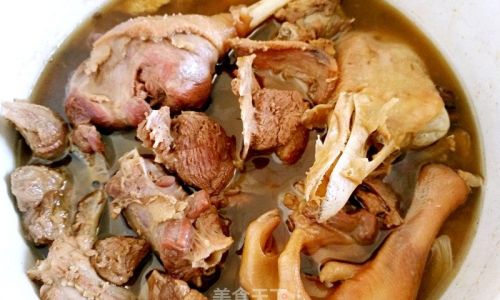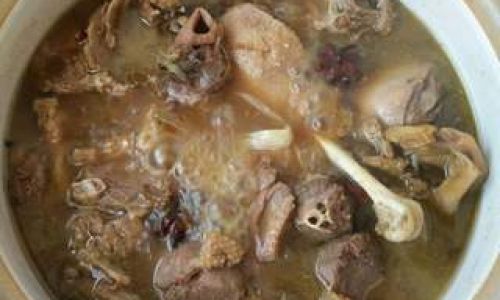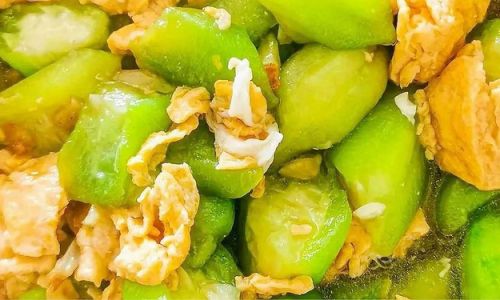Table of content
- Root Vegetables: Earthy Sweetness
- Aromatics: Building a Flavor Base
- Tomatoes: Acidity and Umami
- Bay Leaves and Thyme: Classic European Notes
- Juniper Berries and Allspice: Nordic Inspiration
- Star Anise and Cinnamon: Asian Fusion
- Apples and Pears: Orchard Sweetness
- Dried Fruits: Prunes, Apricots, and Cherries
- Cranberries and Lingonberries: Festive Zing
- Bacon or Pancetta: Smoky Richness
- Sausage: Spicy or Sweet
- Duck or Chicken: Dual-Meat Delight
- Lentils: Earthy Protein
- Barley or Farro: Chewy Grains
- Chickpeas: Nutty Crunch
- Red Wine: Bold Tannins
- Beer: Malty Sweetness
- Cider: Apple-Forward Freshness
- Asian-Inspired Stews
- African-Inspired Flavors
- Latin American Twists
Stewing goose is a culinary tradition that spans centuries and continents, celebrated for its rich, tender meat and the depth of flavor it imparts when slow-cooked. While goose is often associated with holiday feasts or rustic peasant dishes, its versatility in the kitchen is vastly underappreciated. The key to elevating a goose stew lies in pairing it with complementary ingredients that balance its inherent richness, enhance its savory notes, and introduce layers of texture and aroma. This article delves into the world of goose stewing, exploring a diverse array of ingredients—from vegetables and herbs to spices, fruits, and even unexpected proteins—that transform this bird into a culinary masterpiece.
Understanding the Goose: Flavor Profile and Cooking Challenges
Before diving into pairings, it’s essential to grasp the goose’s unique characteristics. Goose meat is darker and fattier than chicken or turkey, with a robust, gamey flavor that some describe as a cross between beef and duck. Its high fat content, while contributing to its succulence, can make it prone to greasiness if not handled properly. Proper stewing techniques, such as slow cooking, rendering fat, and balancing flavors, are critical to achieving a harmonious dish.

Classic Pairings: Root Vegetables and Aromatics
Root Vegetables: Earthy Sweetness
Root vegetables like carrots, parsnips, turnips, and potatoes are quintessential companions to goose. Their natural sweetness and starchy texture absorb the rich stewing liquid, creating a velvety backdrop for the meat.
- Carrots: Add a subtle sweetness and vibrant color. Roasting them first can caramelize their sugars, deepening their flavor.
- Parsnip: Its nutty, slightly peppery taste cuts through the goose’s richness.
- Celeriac: A lesser-known root vegetable, celeriac contributes a celery-like freshness and a creamy texture when stewed.
Aromatics: Building a Flavor Base
Onions, garlic, and celery form the aromatic trifecta of stews.
- Onions: Caramelized onions add depth and complexity. For a French twist, use pearl onions, which retain their shape and sweetness.
- Garlic: Roasted or sautéed garlic mellows into a creamy, savory note.
- Leeks: Their mild onion flavor and silky texture are ideal for stews. Sauté them in goose fat for a luxurious touch.
Tomatoes: Acidity and Umami
Fresh or canned tomatoes provide acidity to balance the goose’s richness. Tomato paste, when caramelized, adds umami-rich sweetness. For a Mediterranean flair, pair with sun-dried tomatoes or roasted red peppers.
Herbs and Spices: Elevating Complexity
Bay Leaves and Thyme: Classic European Notes
Bay leaves infuse a subtle bitterness, while thyme’s minty, lemony undertones complement the goose’s gamey flavor. Fresh thyme sprigs added during stewing release their oils gradually.
Juniper Berries and Allspice: Nordic Inspiration
Juniper berries, a hallmark of Scandinavian and German cuisine, add a piney, resinous note that pairs beautifully with game meats. Allspice berries contribute warm, clove-like warmth without overpowering.
Star Anise and Cinnamon: Asian Fusion
For an unexpected twist, incorporate star anise or cinnamon sticks. Their sweet, licorice-like aromas harmonize with the goose’s richness, especially when paired with soy sauce or rice wine.

Fruits: Sweet-Tart Contrasts
Apples and Pears: Orchard Sweetness
Tart apples like Granny Smith or Bramley add acidity, while pears contribute a floral sweetness. Cook them until soft but intact to prevent mushiness.
Dried Fruits: Prunes, Apricots, and Cherries
Dried fruits plump up in the stew, releasing concentrated sweetness. Prunes add a jammy richness, while cherries provide a tangy kick. For a Middle Eastern touch, use dried apricots and a touch of honey.
Cranberries and Lingonberries: Festive Zing
Fresh or frozen cranberries introduce a tart, festive flair. Lingonberry preserves, a Scandinavian staple, offer a similar effect with less bitterness.
Proteins and Meats: Layering Savory Depth
Bacon or Pancetta: Smoky Richness
Crispy bacon or pancetta lardons add smokiness and saltiness. Render the fat first to cook the vegetables, infusing the stew with porky depth.
Sausage: Spicy or Sweet
Chorizo, kielbasa, or Italian sausage introduce spice and texture. Slice them thickly to prevent them from disintegrating during stewing.
Duck or Chicken: Dual-Meat Delight
Combining goose with duck or chicken legs creates a multi-layered stew. Duck’s gaminess mirrors the goose, while chicken adds mild sweetness.

Legumes and Grains: Hearty Additions
Lentils: Earthy Protein
Green or Puy lentils hold their shape during stewing, adding a meaty texture. Their earthiness complements the goose’s flavor.
Barley or Farro: Chewy Grains
Pearl barley or farro absorbs the stew’s liquid, becoming tender yet chewy. For a gluten-free option, use wild rice or quinoa.
Chickpeas: Nutty Crunch
Canned chickpeas, added toward the end of cooking, provide a nutty contrast. Roast them first for extra crunch.
Alcohol: Depth and Complexity
Red Wine: Bold Tannins
A full-bodied red like Cabernet Sauvignon or Burgundy adds tannic structure. Reduce it by half before adding to the stew to concentrate flavors.
Beer: Malty Sweetness
Dark ales or stouts contribute malty, caramel-like notes. Belgian dubbels or porters work particularly well.
Cider: Apple-Forward Freshness
Hard cider or unfiltered apple juice introduces a crisp, fruity acidity. Pair with sage or rosemary for a rustic touch.

Global Influences: Beyond the Western Palette
Asian-Inspired Stews
- Soy Sauce, Ginger, and Star Anise: Marry the goose with a braising liquid of soy sauce, rice wine, ginger, and star anise. Serve over steamed jasmine rice.
- Five-Spice Powder: A blend of cinnamon, cloves, fennel, star anise, and Sichuan peppercorns adds warmth and complexity.
African-Inspired Flavors
- Peanut Butter and Tomatoes: Create a West African-style stew with peanut butter, tomatoes, and chili peppers. Serve with fufu or couscous.
- Berbere Spice: Ethiopian berbere, a fiery blend of chili, ginger, and cardamom, adds intense heat and aroma.
Latin American Twists
- Chipotle Peppers and Chocolate: Smoky chipotles and dark chocolate (a technique from mole poblano) add depth. Serve with cilantro and lime.
- Achiote and Citrus: Annatto seeds (achiote) and citrus juice impart a vibrant orange hue and earthy flavor.
Techniques for Perfect Goose Stew
- Rendering Fat: Prick the goose skin and roast it first to render excess fat. Save the fat for roasting potatoes or vegetables.
- Browning: Sear the goose pieces in batches to develop Maillard flavors.
- Low and Slow: Simmer the stew gently for 2–3 hours to tenderize the meat without drying it out.
- Degreasing: Chill the stew overnight to solidify the fat, then scrape it off before reheating.
Health Considerations and Modern Adaptations
For health-conscious cooks, use leaner cuts like goose breast or remove excess skin. Add fiber-rich vegetables like kale or Swiss chard. For a lighter broth, substitute water for some of the stock and use herbs like parsley and dill for freshness.
Pairing Suggestions: Beyond the Bowl
- Bread: Serve with crusty sourdough, garlic knots, or Irish soda bread to soak up the stew.
- Wine: Pair a robust goose stew with a Pinot Noir, Syrah, or Grenache.
- Beer: A malty bock or hoppy IPA complements rich stews.
Conclusion: The Joy of Experimentation
Stewing goose is an art that rewards creativity. Whether you prefer the earthy simplicity of root vegetables, the exotic spices of global cuisines, or the sweet-tart contrast of fruits, there’s no shortage of ways to elevate this bird. The key is to balance its richness with acidity, texture, and aroma, transforming a humble stew into a feast for the senses. So the next time you’re faced with a goose, remember: the best companion is not a single ingredient, but a symphony of flavors waiting to be composed.
Word Count: 1,821+






0 comments